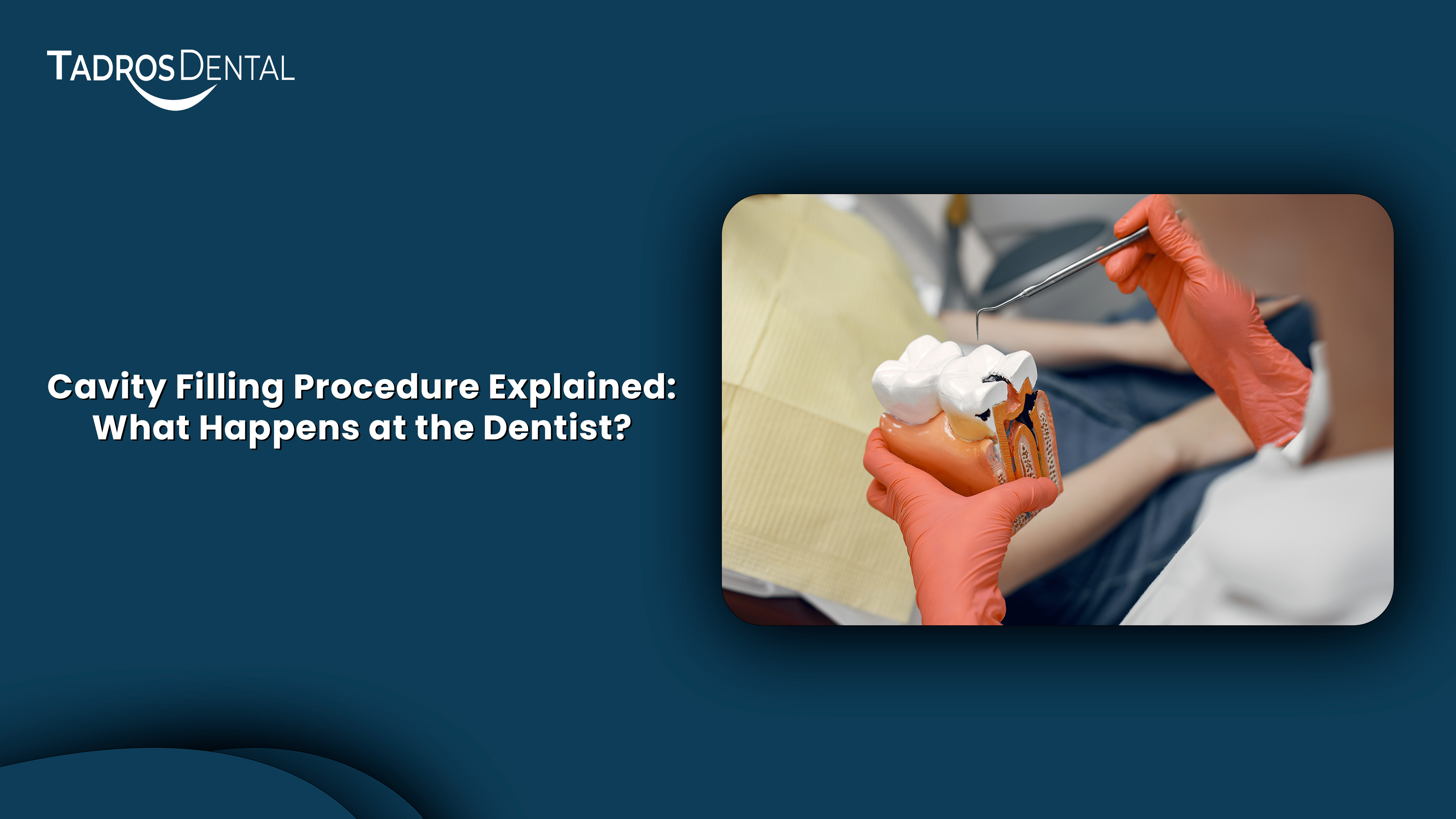
In the US, tooth decay and dental cavities are very common. And to repair these cavities, dentists use cavity filling to fill in those cavities.
According to the NIDCR (National Institute of Dental and Craniofacial Research), close to 90% of adults aged 20 to 64 years of age have undergone tooth decay. Such figures also indicate delayed treatment and confused patients who do not know how a filling actually works. However, this article fixes that by walking you through the cavity filling procedure, step by step, so that you know what to expect and dental teams have a clear patient education script to reduce fear, speed consent, and improve outcomes.
If you have a hole in your enamel or dentin, then you need a cavity dental filling treatment. Your dentist can suggest this treatment in case of visible pits, food trapping, sweet sensitivity, or pain on chewing.
The diagnosis of a dental cavity is easy; you can also independently diagnose it in certain cases. However, modern diagnosis uses visual exams, bitewing radiographs, fiber optic transillumination(a special technique to check abnormalities), and carries out various risk assessments. Treating early prevents larger restorations later. Authoritative U.S. data confirm how prevalent decay is across working ages, which is why fillings remain among the most performed restorative visits.
That’s it: informed discussion, numb the area, remove decay, place and finish the filling, and confirm the bite. The cavity fill procedure is usually completed in a standard operation with local anesthesia. Some practices use lasers for decay removal, but traditional rotary instruments remain common and effective.
Clinics often see three barriers, which include patients' fear of pain. Patients worry about time and cost. Patients are unsure which material to choose.
When a cavity is left untreated, the decay will extend inwards to the pulp. This further increases the risk of fracture and may lead to root canal treatment or extraction. The process of a well-done tooth filling stops that course. It also preserves the rest of the tooth structure and promotes improved chewing, speech, and aesthetics. This benefit can be enhanced through the education of patients on this advantage, which enhances adherence to recall visits.
How Does Numbing Work?
The dentist will numb the area with the topical gel and then gently inject a local anesthetic. After the injection, the numbness begins within minutes. Good anesthesia is the foundation of a calm visit.
How Is Decay Removed?
The dentist removes softened, infected dentin and any undermined enamel. The remaining structure is cleaned and shaped to accept the restoration. Isolation keeps saliva away for optimal bonding.
How Is The Filling Placed In A Cavity Fill Procedure?
Articulating paper marks high spots. The dentist adjusts until your teeth meet evenly. Smooth contacts help comfort and longevity.
Mild sensitivity to cold, pressure, or sweets is common for a few days. Gums near the injection site can be tender. These effects are generally resolved in a span of one week. In case the sensitivity is aggravated or continues after more than a week, call the office to have the bite checked or continue with the assessment.
These simple steps support the restoration and the tooth around it.
Price varies by tooth location, number of surfaces, and material. National survey-based estimates place typical single surface fillings in the mid one-hundred-dollar range, with composite often costing slightly more than amalgam. Checking benefits in advance helps patients avoid surprises. Clear cost talk reduces cancellations.
Use this quick talk track with your dentist.
Call if pain keeps you up at night, if cold sensitivity lasts more than a week, if floss catches repeatedly at the margin, or if you feel a sharp edge. Most issues are solved with a fast bite adjustment or a minor polish. If you need expert help or have doubts about the cavity filling procedure, call Tadros Dental today!


Privacy Policy | Powered by Capline, a Top-Rated Solutions Provider for Dental Offices.